Valves with All the Trimmings
The term valve trim has been around for about 150 years—shortened at one point from the word: “trimmings,” a term in vogue until the late 1930s.
What is meant by the term today and how trim materials are different from valve materials is addressed in this article.
WHAT TRIM IS
The Manufacturers Standardization Society (MSS) SP-96, “Guidelines on Terminology for Valves and Fittings” gives this technical definition for trim: The functional parts of a valve that are exposed to the line fluid and usually refers to the stem, closure member and seating surfaces.
For some types of valves, the trim is easy to identify and understand, while the trim for other types of valves can be confusing. Although the term “valve trim” is more closely associated with linear and non-return valves, it is also important in quarter-turn valves as well.
The control valve community often takes the definition of trim a bit further by adding guides, bushing and cages to globe-type valve trim descriptions. Additionally, packing system components such as lantern rings (if present) and packing followers are added as well.
Gate valves have been around since the early 1800s, with the earliest examples simple sluice-type devices. On a gate valve, the parts that are trim are easily identified. Those parts are the stem, seating surfaces of the disc and the seats and backseat when present. Aside from being exposed to the fluid under control, trim materials have another common aspect: They face either high-flow velocity or stresses in the form of tensile or compressive loads.
The most common need for using different trim materials is to enhance the sealability of the valve through materials that will last longer after they have been rubbed together during every open and closed cycle. Besides the need to extend the efficacy of the sliding seating surfaces, the trim material must also successfully cope with high velocity and potential erosion during opening and closing.
The high-velocity damage concern is based on the law of physics pertaining to high pressure and orifice size: The smaller the orifice, the higher the velocity of flow through that orifice. A pressure washer is a good example of high velocity created by a small orifice.
TRIM BY VALVE TYPE
Gate valve trim: In the gate valve, the highest velocity occurs as the disc begins to separate from the seats. These surfaces also are where the two seating components slide against each other during valve operation. Because of this, the need for special trim materials is obvious when it comes to valve discs and seats.
In the case of the gate valve stem, the need for protection from erosion because of high velocity is secondary to the fact the stem is in the presence of the line fluid. Because of that presence, an oftentimes strong tensile load is applied to the stem as the valve moves from a tight valve closed state to fully opened. The possibility of high velocity and subsequent erosion occurs as fluid is forced around the disc and into the body/bonnet cavity during opening of the valve.
A second source of potential high velocity can occur if a gross failure takes place in the packing seal, causing high pressure fluid to exit the valve in the tight path between the backseat bushing and the stem. The backseat bushing is considered a trim component and is a candidate for a higher strength/corrosion-resistant alloy for this reason.
Globe valve trim: The primary trim components for globe valves include the stem, disc and seat, seating surfaces and the backseat, if an operable backseat is installed in the valve. The area where confusion exists in globe valves concerns the ancillary components such as nuts and washers that help to contain and align the disc. Some manufacturers consider these items trim, while others do not. Alignment cages or seat-guided disc connections are sometimes added to the trim designation list as well.
Trim components for check valves include the seating surface of the body seat as well as the seating surface on the disc or clapper. While these are the standardized trim components for check valves, sometimes other parts are treated as trim and required or requested to be manufactured from more hearty materials. These components include the hinge pin and disc attachment bolted connection and any washers installed between the disc and disc attachment connection.
Elastomer-seated ball valve trim: Soft-seated trunnion and floating ball valves have a hybrid trim configuration. While the stem and ball usually feature standard metallic materials, the soft seats come in a variety of elastomers.
Metal-seated ball valve trim: Metal-seated ball valves, as the name describes, have metallic ball and seat closure members. These trim components can be manufactured in dozens of materials. In addition to solid components, metal-seated ball valve closure components are often infused with extremely tough metallic coatings such as chrome carbide. These coatings are usually very hard and highly corrosion-resistant.
METALLIC TRIM MATERIALS
Over the past 100 years, trim materials have evolved alongside advances in metallurgy. The first trim material of note for iron valves was brass or bronze. These iron valves with bronze trim are called IBBM valves, which stands for iron-body, bronze-mounted. Also popular early on was tougher bronze alloys substituted for the trim in brass valves. Although the bronze gave some additional improved sealability, the copper-based alloys were not much help in preventing erosion damage.
The next popular trim material to come along, nickel-copper alloys, mitigated the damage of both corrosion and erosion and was in most cases harder than iron and bronze. Some of these alloys were similar to the hardened nickel/copper Monel 500 still in use today.
The top choice for a robust trim material is the cobalt-based material known throughout the industry as Stellite. This material is extremely hard and corrosion resistant. Because of its high hardness, it provides excellent abrasion resistance. Stellite trim on seating surfaces is extremely popular in the power industry for high-temperature steam applications.
In the nuclear industry, where cobalt cannot be used because of its susceptibility to irradiation, super-hardfacing materials such as Ultamet and NitroMax are used.
Today, valve design engineers and end users have a multitude of materials to choose from for metallic trim. Many austenitic stainless steels (300 series) are used, from 304ss to stabilized grades such as 347ss and beyond. Some extremely corrosive fluids require even tougher trim materials such as the Inconels and Hastelloys.
While the materials listed above can be used in quarter-turn valves, additional metallic choices for balls and seats exist in the form of metallic coatings. These coatings are used most often in metal-seated ball valves. Some of the popular coating materials include chrome carbide and tungsten carbide.
NON-METALLIC TRIM MATERIALS
The most common non-metallic trim material is polytetrafluoroethylene (PTFE). PTFE is often referred to by its DuPont trade name, Teflon. Pure PTFE is very soft and pliable and forms a great zero-leakage seal when combined with a smooth metallic mating surface. However, pure PTFE has proven to be too soft for many valve applications. Various reinforced PTFE materials have been developed that include additional strengthening materials such as glass, carbon or graphite.
In addition to PTFEs, other tougher, specialty soft-seating materials such as Nylon, PEEK [polyether etherketone], Kynar and Kalrez are used to beef-up the elastomer-to-metallic sealing system. An important consideration for all these non-metallic materials is their limited upper temperature ceiling. The general range for these materials is between 400°F (204°C) and 450°F (232°C), depending upon the compound.
TRIM AND VALVE STANDARDS
These API standards detail trim materials ranging from type 410 stainless steel through superalloys. In addition, the documents detail material combinations such as 316ss to hardface (cobalt-based) or Ni/Cu [nickel-copper] to hardface. Also included in the standards are requirements for the hardness of these trim materials.
CONTROL VALVE TRIM
While control valve final control elements are usually globe, ball or butterfly valves, issues other than material and corrosion resistance come to the forefront when considering trim for these valves. The control of the flow through the valve body (also called the final control element) is important. The geometry of closure components such as the disc or ball are often altered significantly to change the flow characteristics through the valve.
Control of cavitation and noise become paramount issues to address because of the disrupted flow conditions caused by the closure element (disc or ball), which is partially open almost all the time, creating a significant pressure drop within the valve. This partially open condition can create harsh flow conditions that often result in high noise and material-devouring cavitation.
To alleviate these conditions and their damaging effects, special control valve trim geometries have been developed that drastically alter damaging flow conditions through the valve. These anti-cavitation and noise trims are often complex, highly-engineered components that can look radically different than standard trim pieces.
TRIM MATERIAL CHOICES
Aside from the complexities of control valve trim selection, choosing trim is based upon service conditions. The list of service conditions considered includes fluid chemistry, temperature, operating pressure, flow velocity, presence of suspended solids and how often the valve will be operated.
The first decision usually is based on corrosion resistance. There are many corrosion resistance tables used to determine the suitability of a material to resist corrosion. The second most important consideration is erosion resistance. A material can be extremely resistant to corrosion but not erosion, making it a poor choice for valve trim. Operating temperature is especially important when non-metallic trims are under consideration.
Other trim material choices are usually based upon the experience of the plant personnel. Some refinery and chemical plant applications that require specific trim selection include hydrofluoric acid, hydrogen sulfide (H2S or “sour” service) and chlor-alkali (chlorine) processing.
CONCLUSION
Valve trim has come a long way over the years as trim materials advanced from soft brass “trimmings” to highly sophisticated spray-on coatings. Control valve flow control requirements have resulted in unique trim geometries as well. Because valve components are almost always stressed or subjected to concentrated erosion and corrosion conditions, the need for correct valve trim identification and selection will always be important. VM
GREG JOHNSON is president of United Valve (www.unitedvalve.com) in Houston. He is a contributing editor to VALVE Magazine, a past chairman of the Valve Repair Council and a current VRC board member. He also serves on VMA’s Education & Training Committee, is chairman of VMA’s Communications Committee and is past president of the Manufacturers Standardization Society. Reach him at greg1950@unitedvalve.com.
RELATED CONTENT
-
Piping Codes and Valve Standards
As with every intended use for valves, piping carries its own set of standards that valve companies and users need to understand.
-
Back to Basics: The Nuts and Bolts of Torque and Tension
Torque is a force that causes an object to rotate, while tension is a force that causes an object to stretch or elongate.
-
Ball Valve Basics
Welcome to the first in a series of Valve Basics articles, each focused on a major product type and written especially for newcomers to the industries that use and make valves and related products.




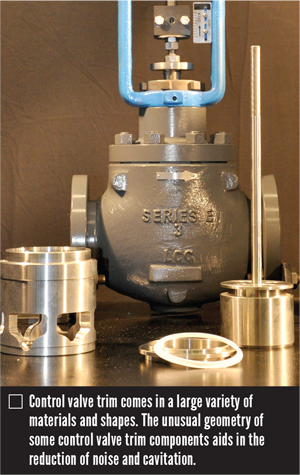
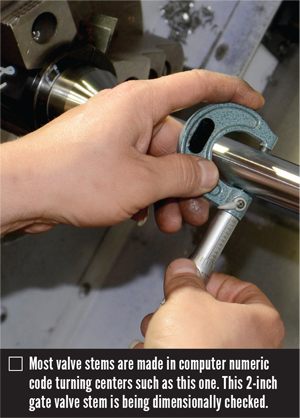
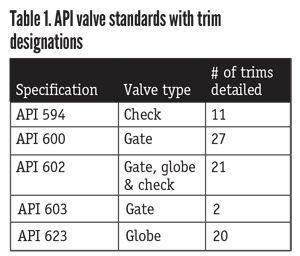
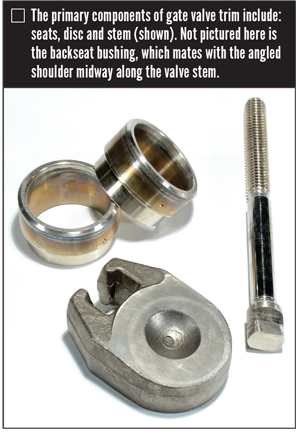
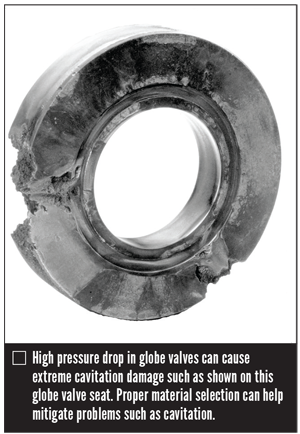
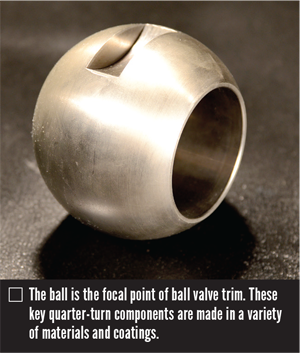






 Unloading large gate valve.jpg;maxWidth=214)